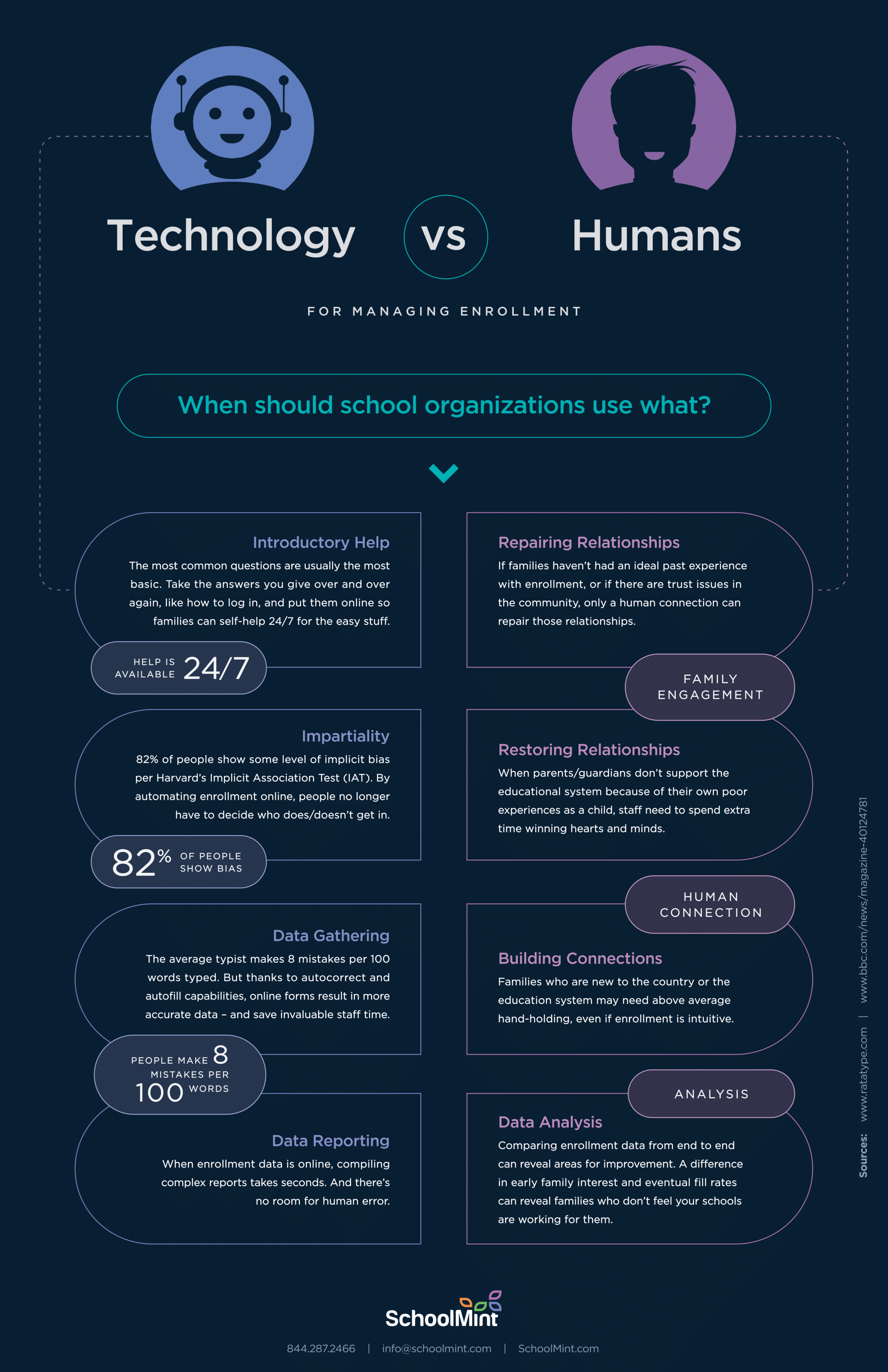Insight from educators who are setting new records.
All around the nation, there’s growing concern about participation in school choice. Specifically, in regards to families of low socioeconomic status. As school options and choice policies expand, educators are rightly asking if all families are benefiting from these changes.
The concern is largely rooted in the systematic barriers that can prevent some families from participating.
Even today, it can be quite a complex process to enroll a student in a school other than the one they’re assigned.
Barriers to Enrollment
There are a variety of barriers to enrollment families from disadvantaged backgrounds may face. To be involved in the enrollment process, a family needs:
- Knowledge of the system
- Advanced planning
- Transportation to/from schools or enrollment centers
- Flexible work schedules or free time
- Fluency in English to complete paperwork needed to apply
In many of the school networks and districts we partner with, we’ve seen that technology can remove these barriers.
Technology can transform a clunky, bureaucratic enrollment process into one that’s online, multilingual, and mobile-friendly. The ease and accessibility of an online interface is a bit of a quick win. And after transforming the way their families choose and enroll in school, many of our partners are seeing improved participation.
Chicago Public Schools, for instance, saw record-setting levels of participation just in their first year of an online, unified enrollment system alone.
Less of a quick win, but no less significant, are the other, more surprising ways that technology is increasing choice participation from key family groups.
Oakland Unified School District
Take Oakland Unified School District, for example. Technology is allowing their staff to work through enrollment in a way that’s smarter and faster. And it’s freeing up hours and hours of their time.
With that regained time, staff is now devoting more resources to family engagement and relationship-building. Staff is shifting from clerical enrollment data entry (now automated with online platforms like SchoolMint Enroll) to verifying data with the families that need extra attention. And they’re making connections and building relationships in the process.
Essentially, OUSD is employing technology to do what it does best so humans can do what they do best: connect on an interpersonal level.

District leaders believe these families, because of their situations, intentionally distance themselves from a school or district office, which makes it harder for them to effectively advocate for a child:
- A parent or guardian who didn’t have an ideal experience with the school system in their own life.
- Families who don’t trust school choice policies are fair because of recent negative experiences.
- Families who don’t understand how school choice works, because they haven’t been informed or because they are new to the country or the educational system.
These are the families OUSD staff is spending more time with during enrollment. They’re using their uniquely human capacity to relate to these families, building the bridges that bring them back to the district.
And it’s working.
“Where we’ve had some of the highest participation, using SchoolMint, has been at some of our schools that serve the lowest income and highest percentage of ELLs,” reports Dr. Charles Wilson, the district’s Executive Director for Enrollment and Portfolio Management.
While not every city has the same history or socioeconomic profile as Oakland, in any choice environment, there are likely some groups that are participating a little less. And so what all educators can take away from Oakland’s example is that, in enrollment, there are important roles for both technology and humans to play.
And by making sure each is allowed to do what they do best, districts and school organizations can not only increase family engagement with choice but also better serve the families who are at a disadvantage.